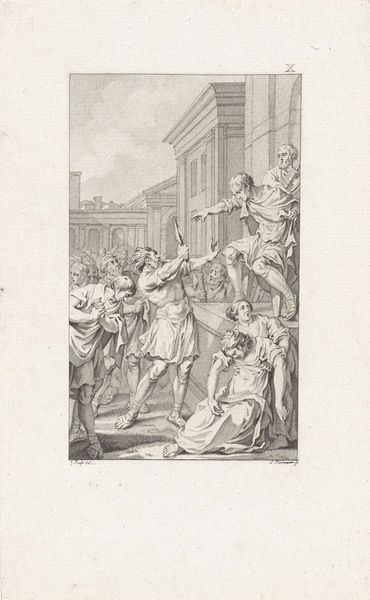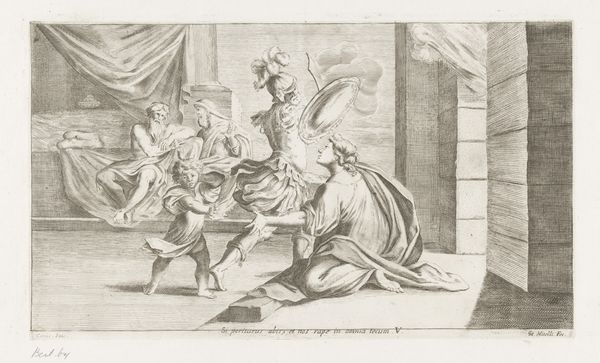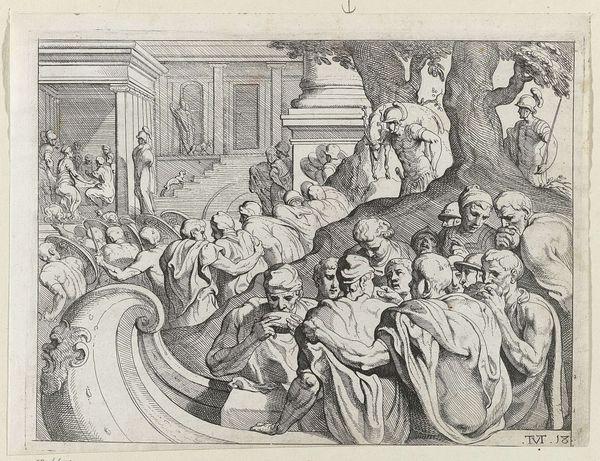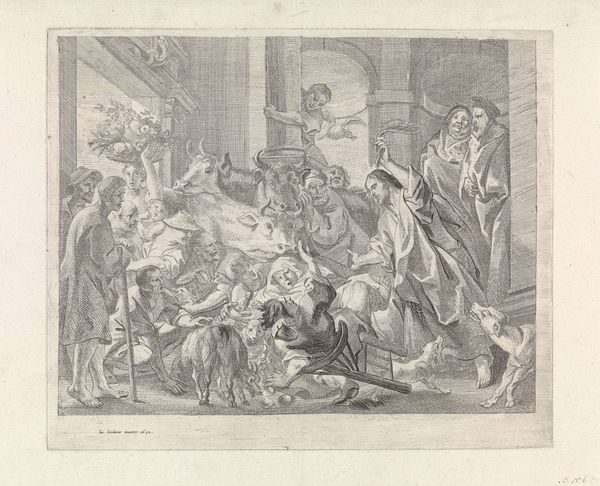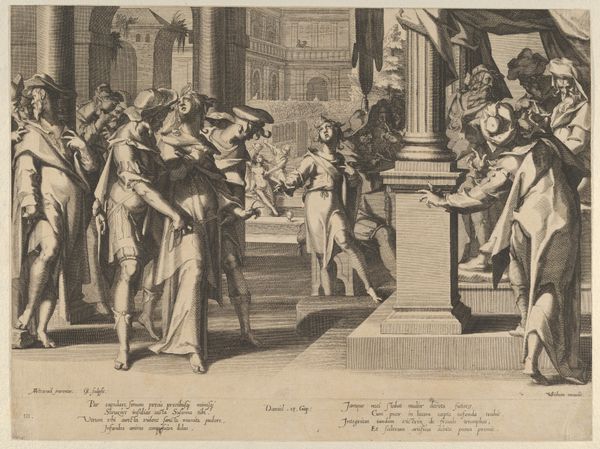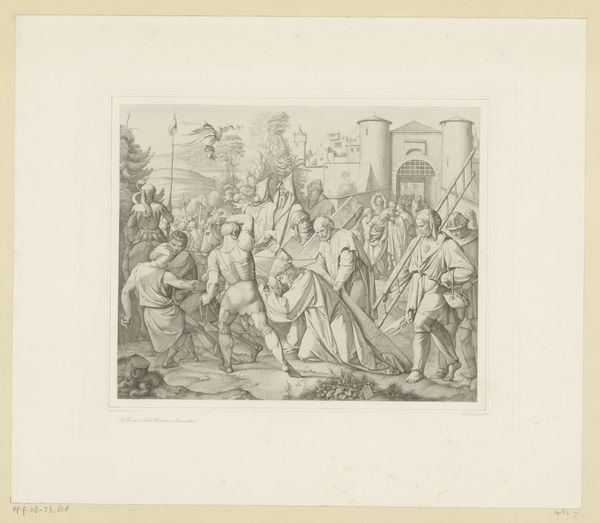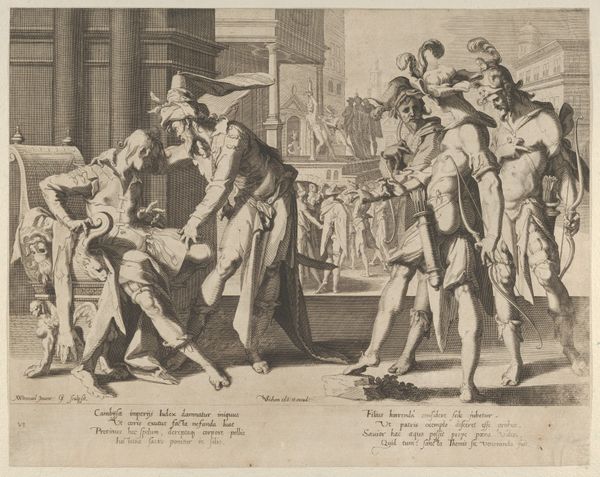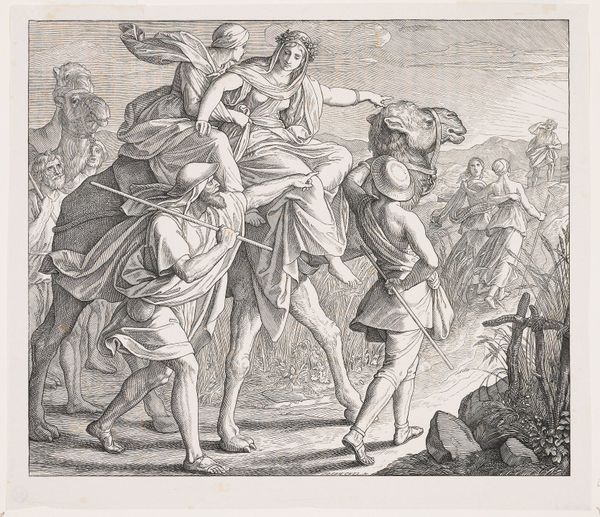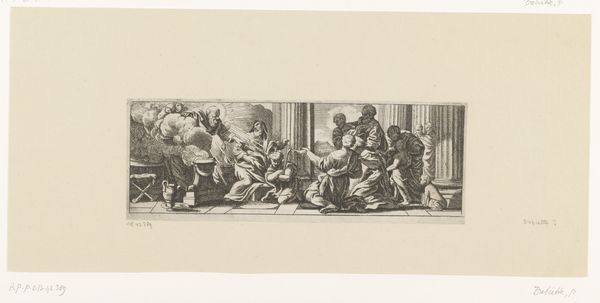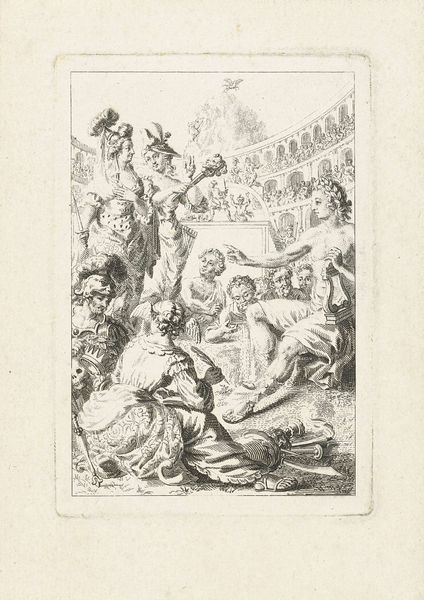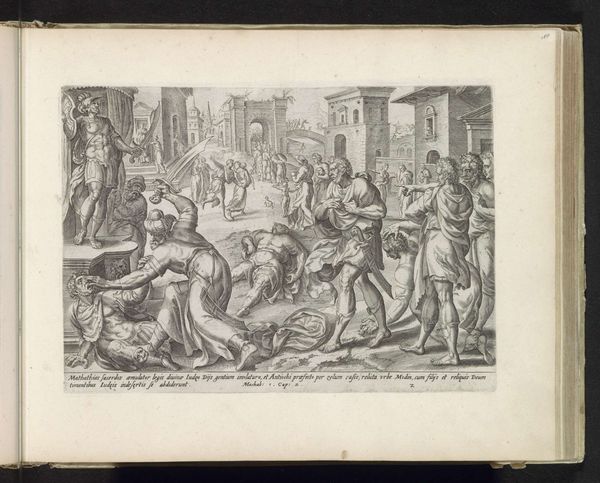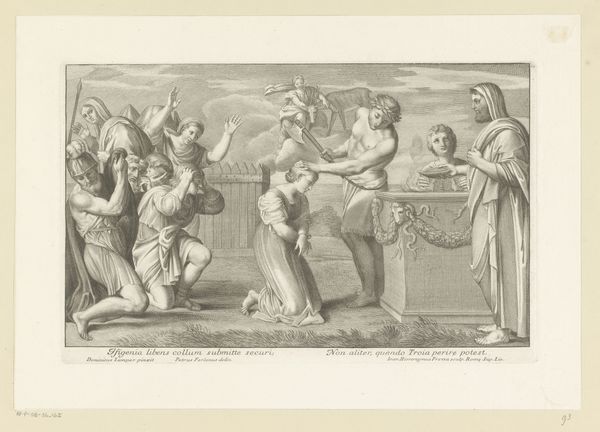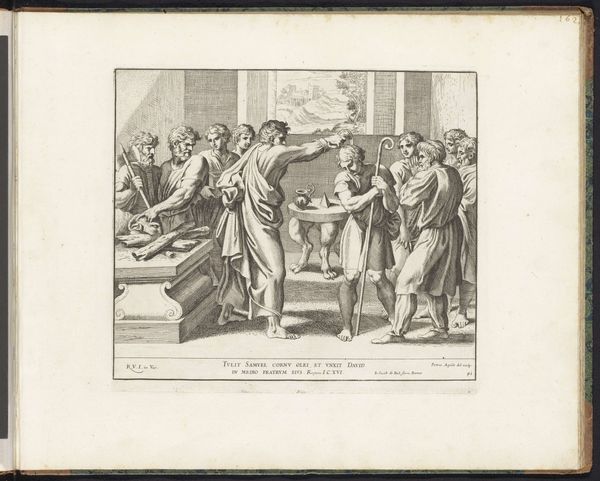
print, engraving
# print
#
figuration
#
history-painting
#
northern-renaissance
#
engraving
Dimensions: height 322 mm, width 510 mm
Copyright: Rijks Museum: Open Domain
Editor: Here we have "Strijd om de broek", or "The Struggle for the Trousers," an engraving created by Frans Hogenberg sometime between 1540 and 1590. It depicts a group of women aggressively fighting over a man. It feels almost satirical in its portrayal of gender roles. What is your interpretation of this work? Curator: As a materialist, my focus goes to the engraving process itself. Consider the labour involved in meticulously carving those lines into a metal plate. The printmaking process allowed for mass production and dissemination of such images. "The Struggle for the Trousers," depicts a fascinating inversion of power dynamics. This piece acts as a commentary on early modern European gender norms, the negotiation and contestation surrounding them and the implied access to wealth and authority. How might the printing and sharing of an image like this have impacted those norms? Editor: That's a great question! It definitely broadened access. I see what you mean about the labor, too. Looking closer, I notice the sharp lines, a contrast with the relatively soft rendering of the figures' bodies. How does the physical production of the print—the very materiality of it—intersect with its social context? Curator: Precisely! This piece doesn’t merely represent a scene; it actively participates in shaping and disseminating societal beliefs. The act of creating multiple copies cheapens it somewhat, which meant it could gain further visibility among merchant classes and city dwellers than, say, an oil painting in someone's parlor. What does that broadened consumption suggest about how and where it may have impacted conversations or behaviours surrounding marital conflict? Editor: I never thought about how its mass production contributed to discussions around social values at the time. Thinking about its impact outside of artistic circles shifts my perspective. Thanks for pointing out its societal ripples! Curator: And thank you. Reflecting on the production allows a look past simple image analysis toward questions about labor, access and power.
Comments
No comments
Be the first to comment and join the conversation on the ultimate creative platform.
